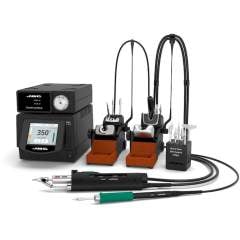The Role of Bosch Rexroth in Modern Manufacturing
The Role of Bosch Rexroth in Modern Manufacturing
Blog Article
Maximizing Output with Bosch Rexroth Equipment
Automation and movement control methods are rewriting the principles of manufacturing, logistics, and even energy management. Behind the curtain, groundbreaking products and effective improvements are driving efficiency, sustainability, and production to amazing new heights. What makes these options this type of hot jbc subject, and why are they topping tendency provides in professional groups?

Shaping the Potential with Numbers and Styles
Nowadays, over 60 per cent of factories in sophisticated economies have applied some amount of automated activity control. Contemporary detectors, electric pushes, and electronic controllers today underpin from robotics to conveyor belts. In accordance with a 2023 report, the international action control market alone is projected to reach $21 thousand by 2027. That quantity shows a compounded annual development rate (CAGR) of 6.5 %, showing exactly how keen industries are to adopt high-precision automation.
But it's not just standard factories which can be benefitting. Distribution stores across North America and Europe are reimagining workflows through wise conveyor techniques and autonomous vehicles. These updates improve throughput by as much as 30 %, reduce labor prices, and reduce error prices across fast-paced supply chains.
Detail Meets Output
High-precision movement technology has become a must-have in industries challenging precision and reliability. Semiconductor production is one example, where linear action guides and multi-axis controllers supply accuracy assessed in microns. New surveys reveal that suppliers leveraging these solutions see deficiency charges decrease by around 40 per cent, giving them an important side in a fiercely competitive field.
Green power and e-mobility are seeing related revolutions. Wind and solar installations increasingly depend on real-time automation to improve energy record and streamline maintenance. That intelligent approach helps reduce downtime, with one examine remembering a 20 % decrease in maintenance costs at features that have followed automated control systems.
The Wise Factory Revolution
Automation is no further just about reducing human error. It's about producing clever factories, where every part communicates seamlessly. Technologies featuring predictive analytics and IoT connection check machinery health and estimate preservation wants before breakdowns occur. Research indicates that predictive preservation can reduce unplanned downtime by up to 50 %, translating into substantial savings for plant operators.
From automotive manufacturers ramping up generation speed to logistics firms seeking precise managing and energy savings, the numbers inform a compelling story about that accelerating sector. If you track current trends or shape buying decisions, understanding wherever the industry is headed is crucial.
What's Next for Automation and Motion Get a handle on?

The give attention to sustainability, data-driven production, and better present organizations is only going to grow. Global demand for robotics and intelligent controllers continues to increase, particularly in groups where efficiency and flexibility mean survival. Industries buying next-generation automation are placing themselves apart—with the numbers to show it.
For businesses mapping out their next move, automation and movement get a grip on are becoming less of an option and more of a necessity. With earnings assessed in larger production, decrease charges, and new features, the case for use never been clearer.
Report this page